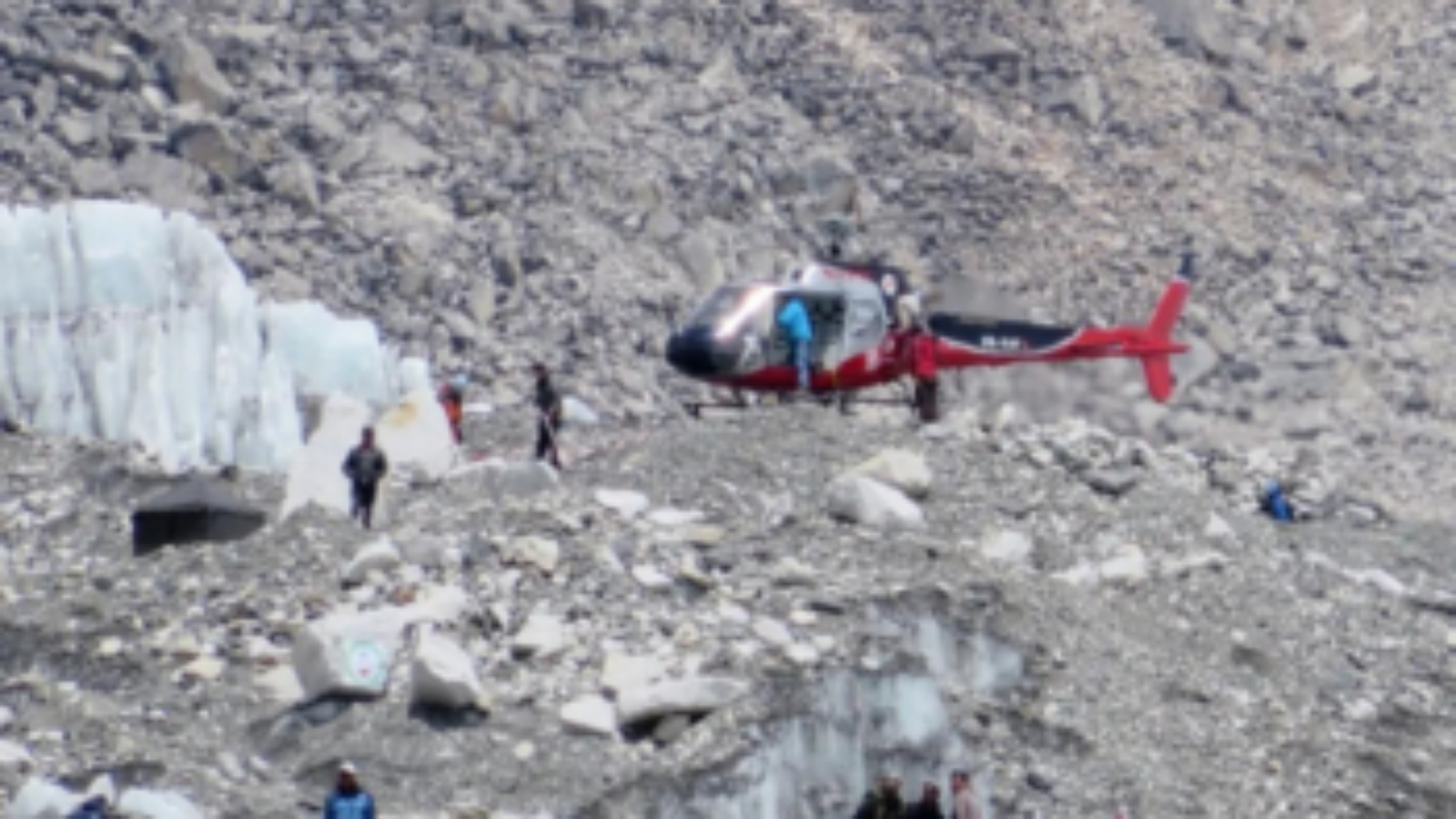KATHMANDU: Ten years ago, the deadliest disaster to ever strike the world’s highest mountain, an avalanche, left Nepali mountain guide Dawa Tashi Sherpa fighting for his life. The April 18, 2014 accident that claimed the lives of sixteen Nepali guides brought attention to the extreme risks they must take in order to fulfill the aspirations of well-off foreign clients.
Few foreign visitors could reach the top of the intimidating peak without their vital work in carving out climbing routes, repairing ropes, repairing ladders, and carrying heavy gear up the mountain. A wall of snow crashed through the Nepali guides ten years ago as they struggled through the pitch-black, high-altitude Khumbu icefall with heavy equipment.
Dawa Tashi was thrown roughly 10 meters (33 feet) to the ground by the force of the avalanche, breaking his nose, left shoulder blade, and ribs. At the age of 22, Dawa Tashi remembered his friends who passed away. They never found the remains of three of them. “To have survived was a blessing,” he told AFP. “In the hospital, they would appear in front of my eyes every time I tried to fall asleep.” The catastrophe sparked demonstrations calling for better pay and working conditions for the guides as well as an extraordinary season-long closure.
It started a discussion about paying the families of Nepali mountain workers and guides who were killed or seriously injured. Many are dependent on the altruism of Western climbers, even though they work for expedition companies and are essential to the multimillion-dollar success of the sector. Nima Doma Sherpa, who lost her husband Tsering Onchu, 33, in the avalanche, recalled that “it was very difficult back then.”
“What can you do if your home’s principal support is missing? When the kids were little, I was concerned about how I would raise them and provide for the family. The lucrative climbing industry brings in large sums of money for the government, which in 2023 made over $5 million in revenue from Everest fees alone.
It promised the families of those killed in the 2014 accident, soon after, a paltry $400 to cover funeral costs. Anger-filled Nepalis rejected the offer; their families had received only $10,000 in life insurance at the time. Days of stress at the base camp followed as a result of the ensuing bitter dispute, in which Nepalis demanded improved death and injury benefits from the government.
Heartbroken by the deaths of their colleagues, Sherpa guides threatened to cancel the climbing season, throw mountaineers’ plans into chaos, and boycott the sport. He lost three guides in the avalanche that year, and Sumit Joshi of Himalayan Ascent, an expedition operator, said, “It was a tipping point for young Sherpas who were frustrated.” His Everest teams haven’t ascended on the anniversary since then. “Ten years later, their working conditions and the respect they receive have improved,” he stated.
Standards for safety are required
The Everest base camp demonstrators in 2014 had a number of demands. Among them were an increase in insurance benefits and a relief fund derived from royalties from mountains. The head of the Nepal Mountaineering Association at the time, Ang Tshering Sherpa, said, “We were advocating for the Nepali climbers, ensuring they can get as much benefit as possible.” “But there were constraints, so not all demands could be satisfied.”
In the event of a death, the insurance payout was raised by 50% to 1.5 million Nepali rupees ($11,250). With permission to fly supplies to higher camps, fewer Nepalis are now required to traverse the dangerous Khumbu icefall.
The bulk of climbers are now brought in by Nepali companies, and larger firms have seen improvements in guide pay and working conditions. Foreign operators have been replaced. Mingma G Sherpa, the guide, stated that not much else has changed. He claimed that although they protested, it was only inside the base camp. “To make the mountains safer, we really need to set a standard for climbers. The main thing is that the government policies are still not good.”
Wives disagree
Before the climbing season started in 2015, a strong earthquake at Everest’s base camp caused an avalanche that claimed the lives of eighteen people. The previous year’s season began with the deaths of three Nepali climbers who were carrying supplies for an expedition; they were struck by falling glacial ice and swept into a crevasse.
Numerous local guides have left the business, according to Mingma G. Sherpa. There are now far fewer Sherpas than there used to be. Businesses now need to go find Sherpas. Previously, Sherpas would need to go around seeking employment,” he stated. “We would like to go climbing because we are familiar with the surroundings, but the family members are against sending us. Wives and mothers cannot agree.
Surviving Even now, at the age of eleven, Dawa Tashi leads climbers and made a trip back to Everest in 2021. He’s getting ready to lead six Americans up the central Mera peak, which rises to 6,461 meters. He made reference to the $11,000 that each foreign climber must pay the government to climb Everest when he said, “There were improvements after the disaster, but it is not enough.” He declared, “The government should establish a fund to protect the labor force.” “The clients would gladly pay it as well, understanding that it will go toward supporting their team.- AFP



Add a Comment